 We now know when the insignia worn by the camp staff was changed. But why?
We now know when the insignia worn by the camp staff was changed. But why?
In his work indexing the Arizona-related stories from Happy Days, Bob Audretsch has uncovered tons of interesting bits of information about the CCC, not just in Arizona and not just pertaining to the little, often overlooked references to camp life.
Larger developments and policies that shaped the program between 1933 and 1942 are widely known or at least vaguely understood but often the little facts behind the implementation of the policy are seemingly lost to history – buried deep in a stack of boxes in the National Archives perhaps.
Folks who’ve made a study of the CCC will have noticed that at some point in the lifespan of the program, the officers who ran the camps switched uniforms and their insignia changed from the familiar insignia of the U.S. military to an insignia created specially for the CCC. Bob Audretsch has located an article that spells out this change in the April 13, 1940 issue of Happy Days.
 Under the headline "Eagle and Latin Phrase for Officers", the article reads:
Under the headline "Eagle and Latin Phrase for Officers", the article reads:
Larger developments and policies that shaped the program between 1933 and 1942 are widely known or at least vaguely understood but often the little facts behind the implementation of the policy are seemingly lost to history – buried deep in a stack of boxes in the National Archives perhaps.
Folks who’ve made a study of the CCC will have noticed that at some point in the lifespan of the program, the officers who ran the camps switched uniforms and their insignia changed from the familiar insignia of the U.S. military to an insignia created specially for the CCC. Bob Audretsch has located an article that spells out this change in the April 13, 1940 issue of Happy Days.
 Under the headline "Eagle and Latin Phrase for Officers", the article reads:
Under the headline "Eagle and Latin Phrase for Officers", the article reads:Washington, D.C. – CCC camp officials are to get a new corps insignia to replace the regulation one now used on CCC uniform hats. Devised by the war Department on request of Director James J. McEntee, the insignia will resemble the drawing above. Specifications now are being drawn by the Army Quartermaster.
The design, somewhat similar to that of the Army, will be of jewelry bronze, 2 ½ inches high, with raised letters. The Latin quotation at the bottom, “Semper Patria Mea,” means “Always My Country.” It was chosen by Director McEntee. The design was executed by the heraldry office of the War Department.
The reason for the switch lies buried in a bureaucratic maneuver that took place in 1939. The War Department was never 100% on board with participation in the CCC program; they were a reluctant partner at first and eventually grew into a grudging participant, having recognized a number of benefits that could be derived from their participation in the CCC program. Nevertheless the relationship between CCC Director Fechner and the War Department was never a close one and by 1939 the War Department was taking steps to have itself absolved of responsibility for the camps.
A move by Congress in April 1939 only served to push the divorce along. On April 3rd Congress voted to give full disability benefits to Reserve officers assigned to active duty with the CCC; this was an expense the Roosevelt administration could not sanction and in response he decided to replace all Reserve officers assigned to CCC camps with civilians and the changeover was complete by the end of 1939. Nevertheless, the War Department remained in control of the camp administration, but the change in policy explains why the insignia of camp personnel was undergoing the changes that are outlined in the short piece from the April 13, 1940 issue of Happy Days. (I’ve drawn on John Salmond’s book The Civilian Conservation Corps: 1933-1942 for background on the change in policy.)
Who knows what other tidbits one is likely to turn up in poring over the old issues of Happy Days newspaper? Future researchers will certainly owe a dept of thanks to Bob Audretsch for his work in compiling the Arizona index for Happy Days. Perhaps other researchers would consider undertaking a similar indexing project for other states. Imagine if stories for all the states and territories were indexed for Happy Days. What a gold mine that source would become.
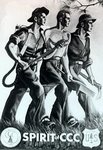
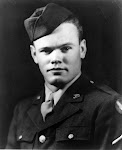





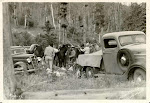
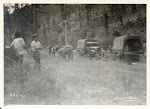
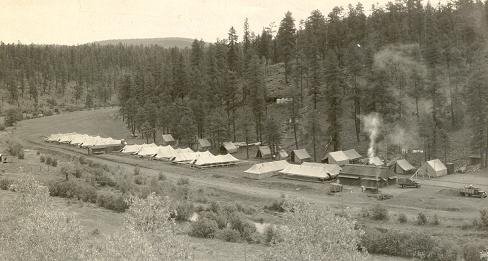


No comments:
Post a Comment